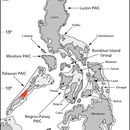en
names in breadcrumbs


Previous taxonomic assessments of species in this genus recognized six groups of species that shared similar morphologies (see Brown and Alcala, 1980). Subsequent analyses of morphology and phylogenetic studies have not supported the monophyly of these species groups, and large taxonomic revisions are needed in this diverse group of ground skinks to sort out the true species diversity and appropriate generic assignments of its members. This species has traditionally been considered a member of Group 3 species in the genus Sphenomorphus. Group 3 species were diagnosed on the basis of being small to intermediate sized, slender species that possess a number of scale characters in common (Brown and Alcala, 1980). Brown and Alcala (1980) also considered the Borneo species S. murudensis and S. kinabaluensis from Borneo as part of this group; however, Greer and Parker (1967) considered these species part of Group 4 or "variegatus" group.
In recent study of Philippine forest skinks, Linkem et al. (2011) used molecular data to test the monophyly of previously hypothesized species groups within the genus Sphenomorphus. Results of the study indicated widespread taxonomic instability, and as a result, broad taxonomic changes were made to the genus, resurrecting available names as well as describing new genera. Sphenomorphus victoria is now recognized to be a member of the genus Insulasaurus.
Sphenomorphus victoria can be distinguished from congeners by the following combination of characters (1) medium body size (SVL 45.0–47.2 mm); (2) paravertebral scales 64–66; (3) midbody scales 30–32; (4) number of supraoculars contacting frontal 2; (5) Toe IV lamellae 18–20; (6) prefrontal scales separated; (7) frontoparietal scales not fused; (8) venter yellow.
Sphenomorphus victoria is known only from Palawan island in the western Philippines.
Palawan Pleistocene Aggregate Island Complex (PAIC; Brown and Diesmos, 2002).
SVL 45.0–47.2 mm
Thumb Peak, Palawan Island, Philippines, collected by Edward H. Taylor; type in Museum of Comparative Zoology; MCZ 44162
Insulasaurus victoria is a species of skink. It is endemic to Palawan in the Philippines.[1][2] It measures about 46 mm (1.8 in) in snout–vent length.[2]
Insulasaurus victoria is a species of skink. It is endemic to Palawan in the Philippines. It measures about 46 mm (1.8 in) in snout–vent length.